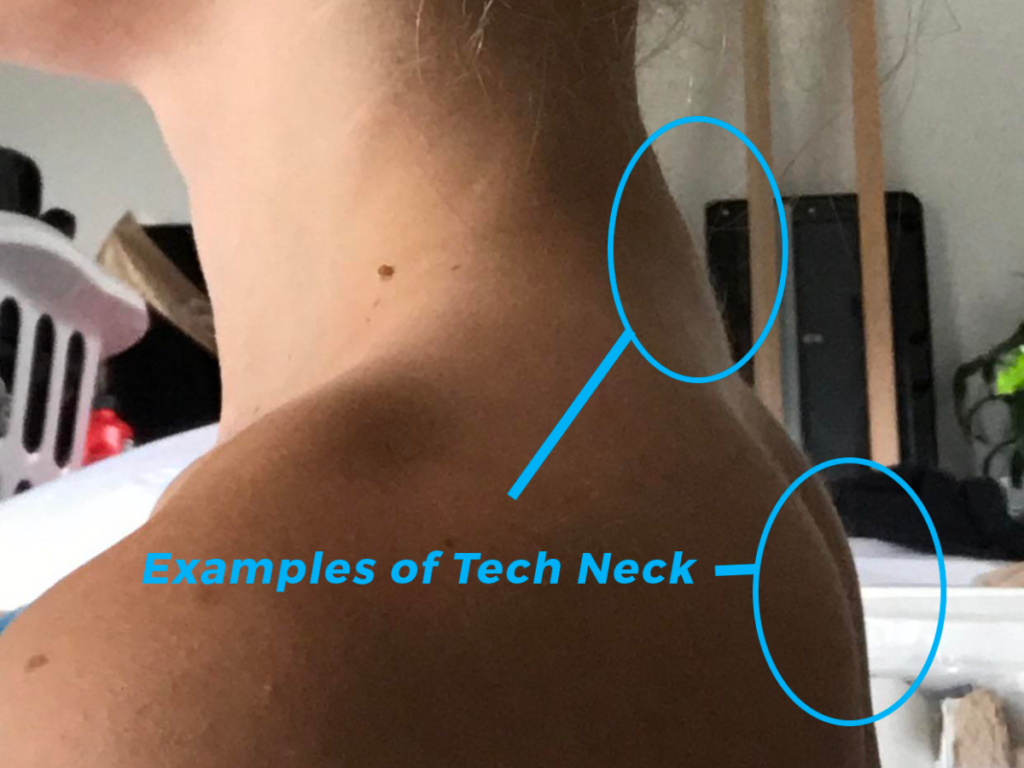Fixing Tech Neck & Other Disease of Lack of Movement
By Johnny Bouchard (MS, CFL3, LMT)
Humans are meant to move. Our bodies are brilliantly engineered to run, walk, carry, push, pull, squat, lunge, and rotate all at the same time.
From a survival standpoint, these foundational movements are at the core of our existence. In our early hunter-gatherer days, we would move for hours and hours each day to survive, but movement is more important on a cellular level for survival and our very form.
We have to look at whales to understand the importance of movement and how it shapes the human body. Specifically, the badass killing machines that are orcas. When orcas live in the wild, they often travel more than 100 miles daily to harvest the 300+ lbs of food they need to survive. When killer whales become Shamu, they are, according to SeaWorld “Given all the food they require. They also exercise, receive veterinary care, live in the company of other members of their species, and receive mental stimulation. They adapt very well to life in a zoological setting.” This sounds wonderful until you go to the park and see a floppy dorsal fin on a whale. At first, it seems cute or exciting until you find out that it’s a symptom of lack of movement-based sickness in the whale.

You see, all living creatures are subject to a principle called mechanotransduction. This big giant science word means the forces created by the way (quantities and qualities) you move through the environment most natural to your body (read: your DNA) create structural responses that your body depends on to give it shape.
When whales don’t get enough movement (100 miles per day of chasing prey) their bodies are deprived of load-nutrients that they need to keep the fin upright and flop.
Why does this happen? All living creatures are highly efficient. When our brains find out that we no longer need a function of our anatomy or physiology to survive, we cut it out to conserve energy.
So why am I talking about whale fins? Well, floppy whale fins are a disease of captivity. Like whales, we have created our world of captivity. We no longer have to hunt, gather, fight, and run to survive. Medical care is readily available to us; we can quickly get all the food required to survive, get on our phones for mental stimulation, go to tiny boxes to run or fight, and sit in comfy chairs all day long to do work. The side effects of this captivity are things like tech neck, scoliosis, collapsed foot arches, and “bad posture.”

Our relationship with medicine/therapy reinforces the idea that everyone needs to “take” something different and that we have a problem that needs to be addressed by a specific antidote, that the whale with the floppy fin needs to wear a custom fin orthotic and do three sets of “lift that fin” crunches. If we pan out our perspective, we will see that our species has a movement baseline that developed over the millennia. If we restore these baselines, in this case, if we start meeting our movement requirements, our body will restore its equilibrium or homeostasis. The root problem will have been eliminated; the symptoms will fade over time.
The rub is this: societally, we are not going backwards. No one is going to wake up tomorrow and decide to trade the steak in their freezer for a spear & 20-mile hunt-run. So what should a user do to restore our movement baselines and fix the root cause of many of our diseases of captivity?

Easy: revolve your life around moving your body more and being less reliant on the comforts of your captivity.
Here are some simple goals that can start helping create a culture of movement in your life and give your body the much-needed mechanical loads it requires to not flop over like a sad whale fin.
- Walk 15,000 steps per day (yes, I said 15,000…if you aren’t at least doing 10k per day, it’s as bad as smoking; if you want to be healthy, you need more)
- Stand more than you sit during work hours
- Walk your kids to school
- Walk to the grocery store and carry the groceries back
- Sit on the floor instead of a couch while watching TV
- Be barefoot as much as possible and wear minimalist shoes when you need to protect your feet
- Do your own yard work instead of outsourcing
- Bike to work instead of driving
- Have several sitting variations you alternate between
- Have a dynamic workstation
- Replace drinking with friends at a bar with drinking with friends on a walk
- Prepare your own food
- Play sports with your kids instead of just spectating them
- Walk while you eat lunch
- Park in the very back of parking lots
If these seem incredibly un-doable to you and you are looking for help with a formal exercise & daily movement program that can prevent you from having a floppy whale tale, then our Hybrid Programming option might be your jam. The basics are
-You come into ASR and meet with one of our amazing trainers
-We talk about your goals
-We do a deep dive eval of your current strength, mobility & general health to find anything we must work on
-We write you a custom program (for your time, capacity, goals, and equipment) that is delivered via an app called TrueCoach.
-Once per month, you come in for a check-in where we educate you on new movements, do more tests, and even treat anything that is bothering you
-Get support for questions/feedback from your coach
Doing this is a great way to have professional help in being more active, staying firm, and preventing your body from a disease of lack of movement.
If you are interested in more on the program, drop me an email at the link below.



